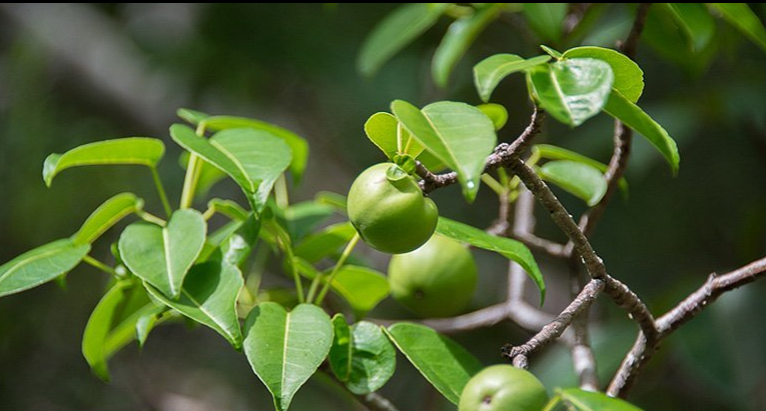
Back in 1999, Nicola Strickland, a radiologist, went to Tobago in the Caribbean. On her first day on the idyllic island, she went foraging for shells and corals in the white sand. Unfortunately, her holiday was about to take a turn for the worse.
Scattered amongst the coconuts and mangoes on the beach, Strickland and her friend found some sweet-smelling green fruit that looked like crabapples. They both foolishly decided to take a bite of the inviting fruit. Within moments, the sweet flavor was overwhelmed by a peppery, burning taste that eventually made it difficult for the women to even swallow.
The fruit in question belonged to the manchineel tree. Sometimes, it’s referred to as the beach apple or poison guava. Native to tropical parts of Southern North America as well as Central America, the Caribbean and northern part of South America. In Spanish, the tree is referred to as ‘el arbol de la muerte.’ That literally means the ‘tree of death.’
So, how dangerous is this tree? According to the Guinness Book of World Records, the manchineel tree is the most dangerous in the world. All parts of the tree are poisonous and interaction with and ingestion of any part of the tree could be lethal. The tree, a distant cousin of the poinsettia tree, produces a thick, milky sap which oozes out of everything – the bark, the leaves and even the fruit. It can cause severe, burn-like blisters if it comes into contact with the skin.
Why? The sap itself contains a range of toxins. The most serious reactions probably come from a substance called phorbol. Phorbol is an organic compound and it’s highly water-soluble. Truthfully, you don’t even want to stand under a manchineel tree when it’s raining. The raindrops carrying the diluted sap can still severely burn your skin.
So how come people don’t get rid of these trees. Truthfully, the manchineel tree plays a valuable role in its ecosystems. It grows into dense thickets that provide excellent windbreaking and protection against coastal erosion on Central American beaches. Caribbean carpenters also use the tree in furniture making. They use it after carefully cutting it and drying it in the sun to neutralize the poisonous sap.
The most toxic part of the tree is its fruit. It’s not recommended that you eat it. Ingesting the fruit can be fatal when severe vomiting and diarrhea can dehydrate the body to the point of no return. Strickland and her friend were lucky enough to survive their encounter with the manchineel tree. They only ate a little bit of the fruit and spent several hours rehydrating with pina coladas and milk.
For more information on the world’s trees, stay tuned to our blog. We try to provide a place where you can learn more about trees and how they impact our environment and world.











